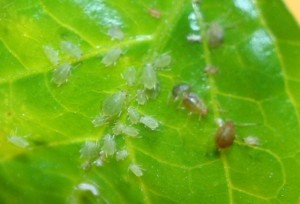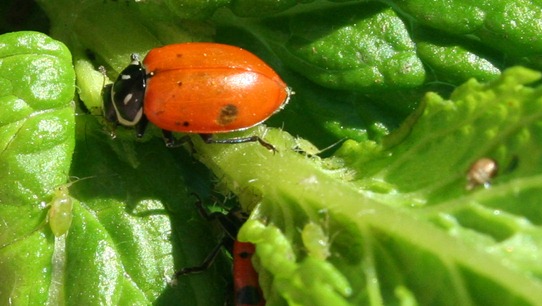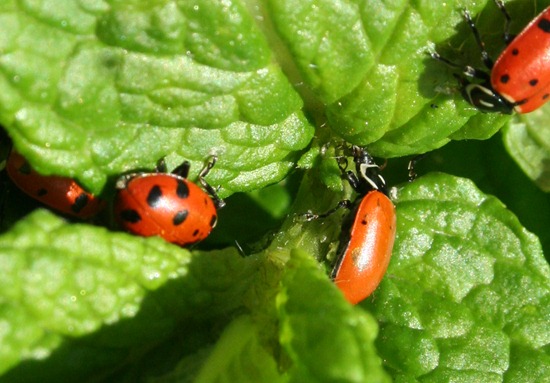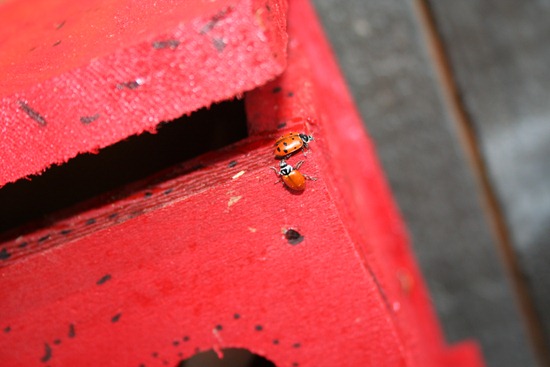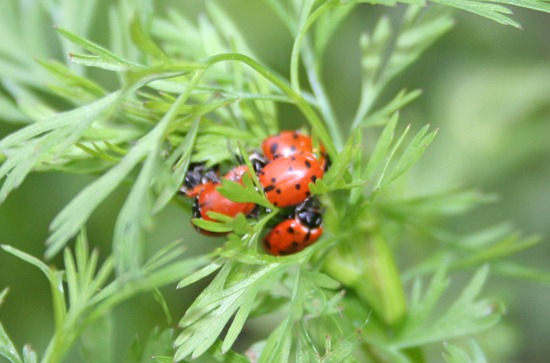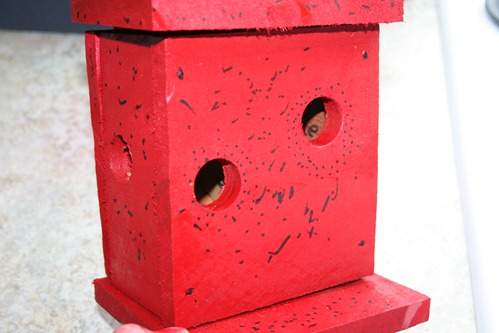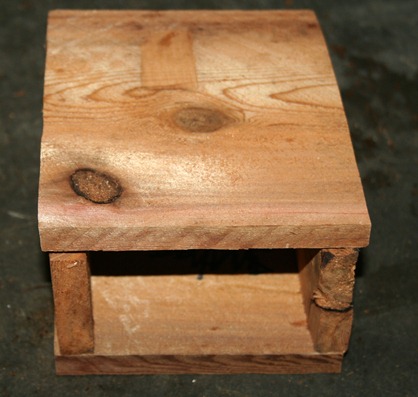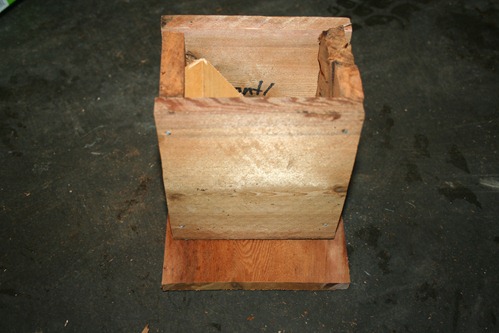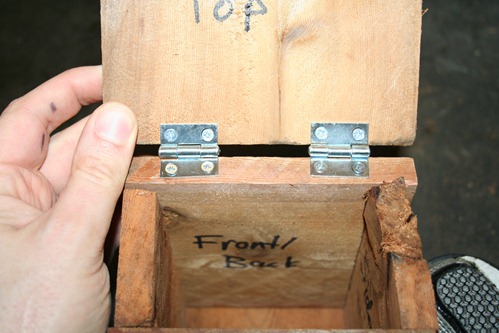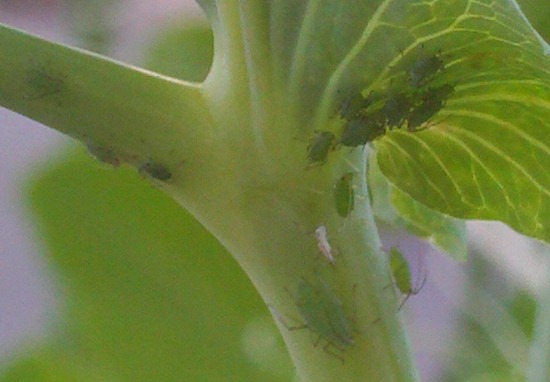Keeping Your Garden Insect Free
11 years ago aphids, guest post, pests
Nothing is tastier during the summer than home-grown vegetables. Unfortunately, insects feel the same way and often destroy vegetable gardens in short amounts of time. To prevent these pests from reaping the benefits of diligent gardening, consider the following tips.
Plant transfers early. While it may be somewhat risky in cooler climates to plant early, this practice can prevent initial pest problems. Insects are not as common during the earlier months, so this is the perfect time to get a head start on a healthy garden.
Keep the garden cultivated and weeded. Healthy soil is a great contributor to pest prevention. Organic mulches often attract insects, so try to avoid these. Weeds should be removed regularly. It is also helpful to add fertilizer frequently and ensure the soil stays moist.
Keep crops covered. Plastic mesh is useful for keeping common insects away, and it is an affordable prevention method.
Plant insect-resistant produce. Some types of vegetables and herbs are naturally unattractive to pests. It is also helpful to rotate crop planting locations by avoiding planting the same families in the same areas for three years. This will lower the risks of damages from overwintering pests living in the soil.
Use pesticides or pest-specific control methods. Both organic and commercial pesticides can be harmful if they are not washed off before consuming produce. However, they may be necessary for keeping certain insect populations under control. It is best to avoid using pesticides that kill both harmful and beneficial pests. Whenever possible, use a pesticide that is only targeted at a specific problematic insect. The following tips are also helpful for preventing specific pests:
- Grow chives, mint or basil to keep aphids away.
- Put crushed eggshells around the bases of plants to prevent snails and caterpillars.
- Use a repellent with eucalyptol to discourage mosquitoes.
- Grow thyme, dill or cilantro to keep leafhoppers control.
- Grow garlic, catnip or yarrow to prevent potato beetles.
Pest problems are not always limited to insects. In addition to these measures, install some chicken wire or mesh fencing around the garden to keep rabbits and other rodents out. Each of these prevention methods are affordable and easy, so they will work for any budget and skill level. And of course, if all else fails, there is always the option to call a pest control professional. Most companies have proven methods and systems to both exterminate pests and ensure that they don’t return.
How to investigate the pests/diseases attacking your plants
13.8 years ago aphids, disease, free, pests
Though there are many sites that contain this information, my experience in the past you have to go through a series of detail on colors and attributes of the insect/fungus and without a degree in botany or Entomology I really have little idea what they are asking for. Gardeners.com’s “Pest and Disease Detective” on the other hand allows you to simply select the specific plant and the area that is being attacked (leaves. stems, flowers, fruit, roots) and it will show you thumbnails to quickly identify the pest/disease that is harming your plant. With a simple click you go right into the description and details how to terminate the problem.
Simple but effective just the way I like it…
Ladybug Release: Not a good day to be an aphid in my garden
13.9 years ago aphids, ladybugs
We normally would have already had our annual ladybug release for aphid control, though this year it has been a little colder than normal so we have to postpone until this evening. You want to release your ladybugs at sunset since they do not like to fly at night and gives you the best odds of keeping them in your garden.
For fun and a little carnage we decided to let 20-30 out early and placed them on some plants with a few too many aphids (peas and mint) In the picture above fortunately (or unfortunately depending how much you loathe aphids) you can’t see it but the ladybug was just having his first victim. With many more to come that were surrounding him (or her).
For some less gruesome pictures of ladybugs you can check out some of the photo shoots from our previous years ladybug releases
Tags: aphids, ladybugs, little green bugs
Build a ladybug house
13.9 years ago aphids, cheap, kids, ladybugs
With a piece of cedar fence board and a few nails you can make your own ladybug house to give your army of aphid eaters I nice comfortable place to take shelter between battles
This project started with my youngest daughter (5 years old) has been asking every weekend, “Can we build something with wood?” Finally I came up with this project which we had a great time building.
Materials
- 1 — Cedar fence board
- about 12 finishing nails
- small hinge
- 1/2-3/4 drill bit
- paint for decorating (optional)
Build instructions
Step #1 – Cut the boards: Given the cedar board should be 5-1/2 inches so the cuts should be pretty straightforward. Cut the following pieces:
- Front Panel — 5.5” by 5”
- Back Panel — 5.5” by 5”
- Bottom Panel — 5.5” by 5”
- Top Panel — 5.5” by 4”
- 2 X Side Panel — 5.5” by 2.5”
- Room Separator — 5.5” by 1”
I used a circular saw for my cuts…yes I really should invest in a chop saw or table saw so hopefully your cuts will be a little straighter but I am sure the ladybugs will not mind.
Step #2 — Nail two sides to back panel
Step #3 — Nail front to sides and back panel
Step #4 — Nail bottom panel to ladybug house.
Step #5 — Drop room separator inside house.
Ladybugs are social and like to group together but sometimes thy like to live in smaller groups, this divider will give an additional area for the ladybugs to hang out.
Step #5 — Attach top using screws and hinge
Step #6 — Drill 3-4 holes into front and sides and decorate (optional)
Step #7 — Hang close to your garden
Now of course the decoration part is optional unless you are a 5 year old then it is required. Here she is carefully deciding what to paint with her marker next…
Tags: aphids, little green bugs
Little green bugs on pea plants
13.9 years ago aphids, ladybugs, organic, peas
It is fairly uncommon for me to see these little green bugs on my peas. In case you didn’t guess these are pea aphids, which suck juices from the plant leaves ad spread disease between plants. This is a rare occurrence because normally it is warmer and drier this time of year and we would have our annual ladybug release to take care of these little pests. If the weather holds up we should have good enough weather to do the ladybug release next weekend.
In the meantime I have resorted to to using some organic pesticide solution to deter these pests until the weather gets better. This will not stop the aphids, but hopefully slow the down a little, though when it comes to organic solutions you can not compete with ladybugs which each one can eat up to 5000 aphids/mites in their lifetime. Come next weekend there will be an aphid massacre in the garden. [evil laugh]
Tags: aphids, little green bugs
EcoSmart Garden Insect Control Review and Giveaway
14.4 years ago aphids, giveaway, peppermint
One of the major disadvantages to growing plants indoors is the lack of beneficial insects. In a larger environment like a greenhouse you could release some ladybugs to initiate an aphid slaughter though the thought of 1500+ ladybugs investing my garage where my grow box resides does not seem like a good idea. I am always open to trying out new products so when EcoSmart contacted me if I was interested in trying out their garden insect control products I jumped at the opportunity.
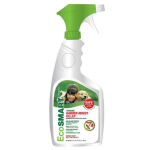 I explained the problems I have with pests in my indoor growing and they suggested “Garden Insect Killer” Their documentation states, “Kills and repels garden insects and mites. Kills exposed eggs, larvae and adult stages.” This seemed to be exactly what I was looking for so once the first onset of pests arrived I applied liberally to tops and bottoms of leaves and so far the results are great. Not only were this effective on the little buggers, given the selection of Rosemary, Peppermint, Thyme, Clove oils it actually makes the garage smell pretty nice as an added bonus.
I explained the problems I have with pests in my indoor growing and they suggested “Garden Insect Killer” Their documentation states, “Kills and repels garden insects and mites. Kills exposed eggs, larvae and adult stages.” This seemed to be exactly what I was looking for so once the first onset of pests arrived I applied liberally to tops and bottoms of leaves and so far the results are great. Not only were this effective on the little buggers, given the selection of Rosemary, Peppermint, Thyme, Clove oils it actually makes the garage smell pretty nice as an added bonus.
Want to try this out for yourself the great people at EcoSmart have offered to give away a bottle of any of their products. So under normal rules, enter a comment and a winner will randomly be selected and sent a bottle of their choice. Comment must be submitted by Friday, December 18th 2009 at midnight (Pacific) to be considered for the drawing. Good luck.
Tags: growbox, outdoor plants, pepper plants, peppermint plant
